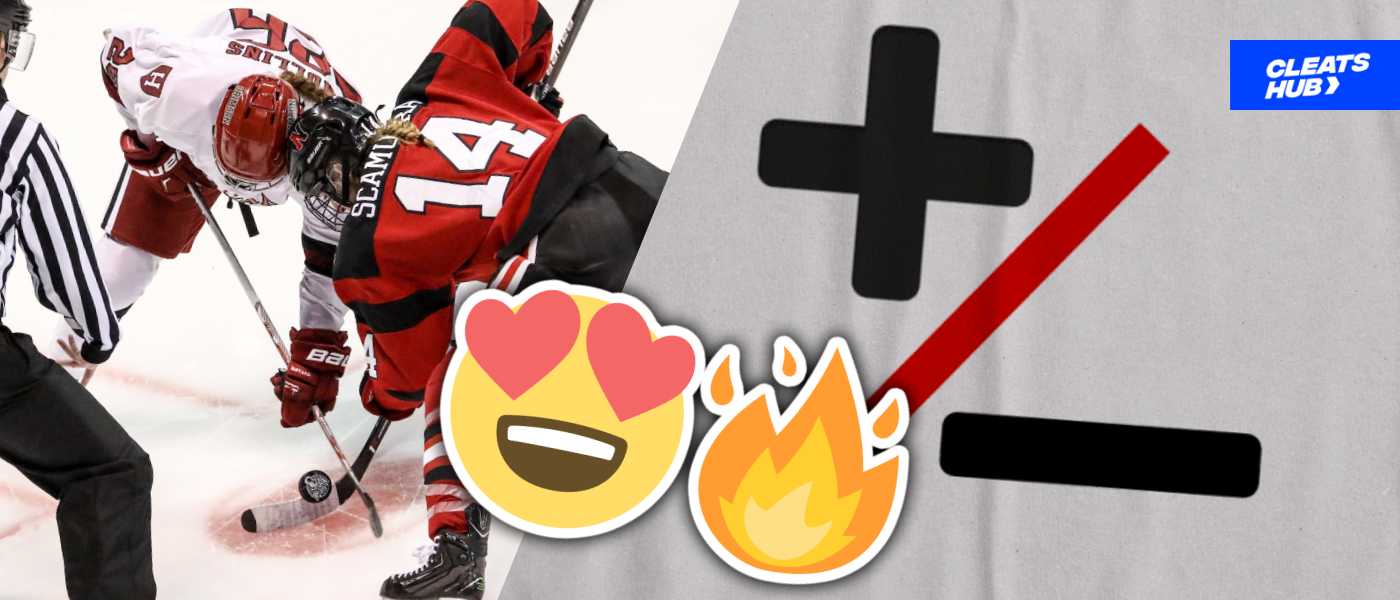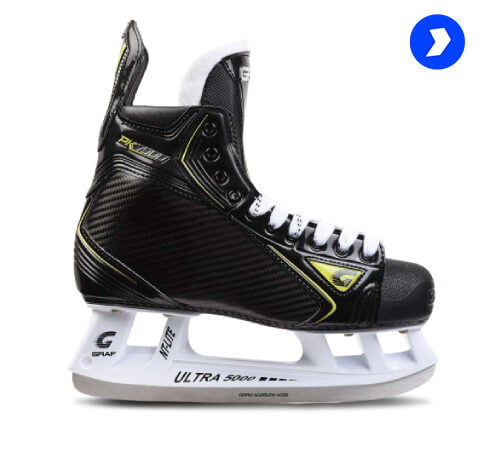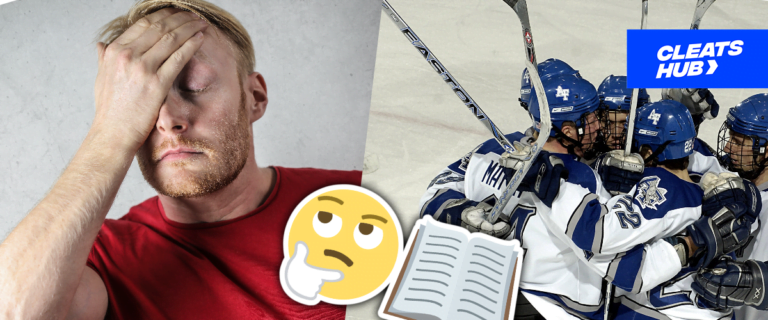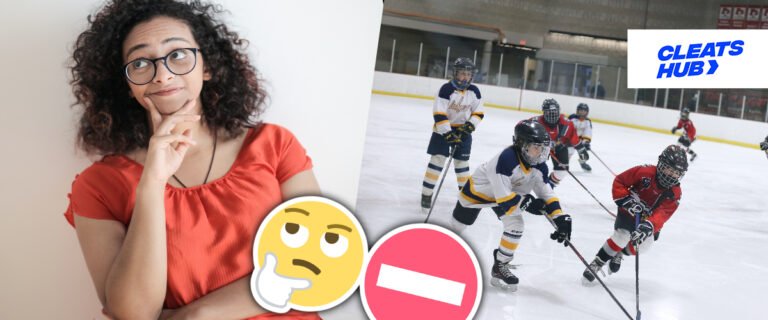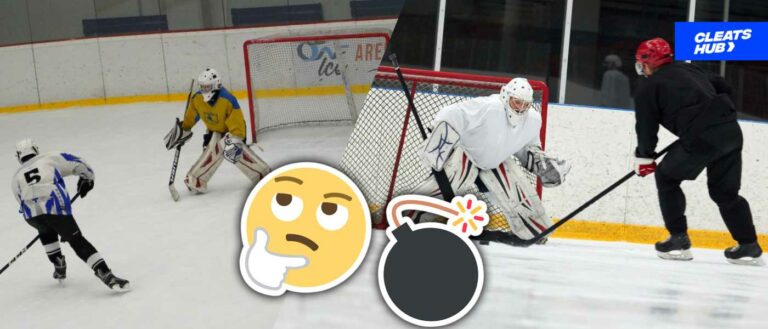What Is Plus-Minus In Ice Hockey? NHL Stats
Today, we’ll also look at the plus/minus in ice hockey as a stat. Plus-minus in ice hockey is represented by the symbol “+/-“. You would notice that certain NHL players have a positive plus-minus stat while others have a negative one if you have looked at the data of a few players.
What is the reason for this? How are these data even calculated, what do they imply, and what does it tell us about NHL players? In the course of this writing, we’ll examine all of this and more.
What Is Plus-Minus In Ice Hockey?

The plus-minus in ice hockey is a stat that shows the offensive and defensive (focusing more on defense) influences of players when playing on the ice. The reason it is called a plus-minus is that they can earn a positive or negative value as points. Specifically, players get a plus point when a goal is scored while they are on the ice and a minus point whenever a goal is scored against them.
Not every goal scored for or against a team is eligible to receive a plus-minus in ice hockey. For these stats to be added to a player’s stats the following must occur:
- To be accredited any either a plus or minus, a player must be on the ice when or goal is scored either for or against his team. A player’s time on the bench does not factor into his stat.
- Similarly, plus-minus points (+/-) can only be acquired by skaters. As goalies never take breaks from the ice and do not work in shifts like skaters do, they do not accumulate these metrics.
- A goal must be scored by a team that is either short-handed or at even strength with its opponent (having fewer players).
History Of Plus-Minus In The NHL

The Montreal Canadiens were the first NHL team to implement the plus-minus in ice hockey in the 1950s. Several NHL teams started using the stat as a measure of player ability as the years went by.
Although he only modified plus-minus for the Montreal Canadiens, Emile Francis, the team’s coach, is frequently credited with launching its use in the league. The 1967–68 season marked the first time the league used plus–minus statistics, though.
How Are Plus-Minus Points Awarded In Hockey

The nature of awarding plus-minus in ice hockey (+/-) is different from the regular stats. Here is how the stats are allocated.
Firstly, if a player is on the ice and his team scores a goal when they are of even strength with their opponent or shorthanded, he receives a plus point (+1).
However, if the player is on the ice when an even-strength or short-handed team scores a goal against them, he earns a minus point (-1).
When a player’s team scores a goal while they are on the powerplay (when they have the man advantage), neither they nor the opposing side receive plus or minus points. Nonetheless, a plus point is awarded to the shorthanded team if players from the team score.
The final distinction is that if a team scores into an empty net, they receive a bonus point, whilst the opposition receives a minus point.
Scenarios Of Plus Minus In Ice Hockey
To better understand how plus-minus is calculated in ice hockey, I’ll create a scenario for the majority of the possible outcomes.
Let’s assume a game between the Bruins and the Panthers begins, and in the first period, Pastrnak (right winger for the Bruins) scores a goal while on a power play. Here is what their plus-minus stat will be:
plus-minus (+/-) = 0
This is because the goal was scored while they were on the power play.
Moving on, suppose 10 minutes into the second period, Matthew Tkachuk (left winger of the Panthers) scores a goal against the Bruins while the Bruins are on a power play. Here are the Florida Panthers’ plus-minus stats:
plus-minus (+/-) = +1
This is because they were shorthanded when they scored a goal against the Bruins.
With a 4-2 advantage over the Panthers at the game’s conclusion, the Bruins prevail. Three of the four goals scored by the Bruins were done with each team at full strength, while the last one was scored on the power play.
Moreover, the Panthers scored twice, once while they had a power play and once when they didn’t. The player’s plus-minus statistics for the Bruins throughout the contest are displayed in the table.
| (Bruins- Panthers) | Bruins (+/-) |
| 1-0 (Bruins scored on a power play) | 0 |
| 1-1 | -1 |
| 1-2 (Panthers scored on a power play) | 0 |
| 2-2 | +1 |
| 3-2 | +1 |
| 4-2 (Player not on ice) | 0 |
| Total | +1 |
When Does A Player Have A Good Plus-Minus Point Count
When the statistic is positive, players are said to have a good plus-minus count in ice hockey. A player’s plus-minus rating is thought to be good in ice hockey if it is at or above +1 since it indicates that the player has a positive impact on the club both on offense and defense.
Simply said, it indicates that the player is skilled at denying goals.
Controversies Relating To Hockey Plus-Minus

Here are some of the reasons ice hockey fans give as to why the plus-minus stats are not as reliable and accurate in determining how a player influences attack or defense in a team.
Poor Players On A Line
An experienced and skilled player would not be able to perform to his full capacity if he was playing alongside a line of inferior players. It doesn’t matter how skilled the great player is if he or she is playing in a forward line with two subpar ice hockey players, since the mediocre players will make the attack harder.
Poor Goaltending
The competence of a goalie affects the plus-minus of an entire team in ice hockey. This is because if he is unable to save avoidable shots, the plus-minus point of the players on the ice will move to the negative side even though it is not under their control.
This is another reason for the controversy, because if poor goaltending can affect the stat value, then it doesn’t take into account the actual performance of a player on the ice.
Coming On The Ice At The Wrong Time
Hockey fans also have doubts about plus-minus statistics since players can enter the rink at the incorrect time. A player’s plus-minus rating will be reduced by one if he enters the game just before his team concedes a goal.
He must carry the stat even though he had no impact on the game and the previous players on the ice were responsible for the goal. The same holds true for gaining a plus statistic (+1) by entering the ice seconds before a goal is scored.
Regardless of whether they contributed to the goal or not, a line of players that join the ice just before their team scores receives a +1. This situation is sometimes more dependent on luck than on a player’s influence.
Poor Team
Similar to having a bad line or players, a team with a bad formation will also have a negative plus-minus in ice hockey. This is because even though there are a few good players, the fact that the team is not efficient will also mean that they lose games.
This eventually sums up to its players earning more negative plus-minus points than positive.
Players With The Best Plus-Minus Stat In NHL History

With +722 plus-minus points, Larry Robinson has the best career plus-minus statistics in NHL history. The Los Angeles Kings and Montreal Canadiens were both teams that the NHL Hall of Famer has played for. Bobby Orr, with a +/- of +582, is the NHL player who comes in after Larry in terms of plus-minus points.
The NHL’s top 10 plus-minus performers are listed in the table below.
| Players | Plus-Minus (+/-) |
| Larry Robinson | +722 |
| Bobby Orr | +582 |
| Ray Bourque | +527 |
| Wayne Gretzky | +520 |
| Bobby Clarke | +507 |
| Serge Savard | +462 |
| Denis Potvin | +456 |
| Nicklas Lidstrom | +450 |
| Bryan Trottier | +449 |
| Brad McCrimmon | +448 |
NHL Plus-Minus Leaders
In this section, we will be exploring the best plus-minus stats among NHL players in the league for the 2021-22 and 2022-23 seasons.
Best Plus-Minus Stats For The 2021-22 Season
Johnny Gaudreau will have the best plus-minus rating for the NHL in 2021–2022. The league’s best plus-minus score was +64, recorded by Gaudreau. Tailing right behind him on the stats ranking was Elias Lindholm with +61.
| Ranking | Players | Plus-Minus (+/-) |
| 1 | Johnny Gaudreau | +64 |
| 2 | Elias Lindholm | +61 |
| 3 | Matthew Tkachuk | +57 |
| 4 | Devon Toews | +52 |
| 5 | Cale Makar | +48 |
| 6 | Justin Faulk | +41 |
| 7 | Gustav Forsling | +41 |
| 8 | Alex Goligoski | +41 |
| 9 | MacKenzie Weegar | +40 |
| 10 | Aaron Ekblad | +38 |
Best Plus-Minus Stats For The 2022-23 Season
The NHL player with the best plus-minus in ice hockey for the NHL 2022-23 season was Hampus Lindholm. Hampus leads the NHL in plus-minus with +49. Next to Hampus in second place is Matt Grzelcky, with a plus-minus score of +46.
| Ranking | Players | Plus-Minus (+/-) |
| 1 | Hampus Lindholm | +49 |
| 2 | Matt Grzelcyk | +46 |
| 3 | Brandon Carlo | +44 |
| 4 | Joe Pavelski | +42 |
| 5 | Tomas Tatar | +41 |
| 6 | Devon Toews | +37 |
| 7 | Jason Robertson | +37 |
| 8 | Patrice Bergeron | +35 |
| 9 | David Pastrnak | +34 |
| 10 | Ryan Graves | +34 |
Conclusion
Many ice hockey fans struggle to understand plus-minus, but maybe after reading this, you can now understand it. Plus-minus is still a respectable hockey metric that shows a player’s ability to defend against goals, despite the controversy surrounding it.
For more on ice hockey stats, read: Understanding Ice Hockey Stats: Players & Teams
Thanks for reading.
Psstt…. The Top Performing Cleats

